News & Media / LinkedIn Ads Strategy Playbook for Professional Services (2025 Edition)
LinkedIn Ads Strategy Playbook for Professional Services (2025 Edition)
LinkedIn Ads Strategy Playbook for Professional Services (2025 Edition)Published
Jul 02, 2025
LinkedIn is the dominant platform for B2B advertising, especially for professional services firms like consulting, financial, legal, architecture and engineering providers. With long, trust-based sales cycles, these firms need a platform that builds credibility while reaching the right stakeholders.
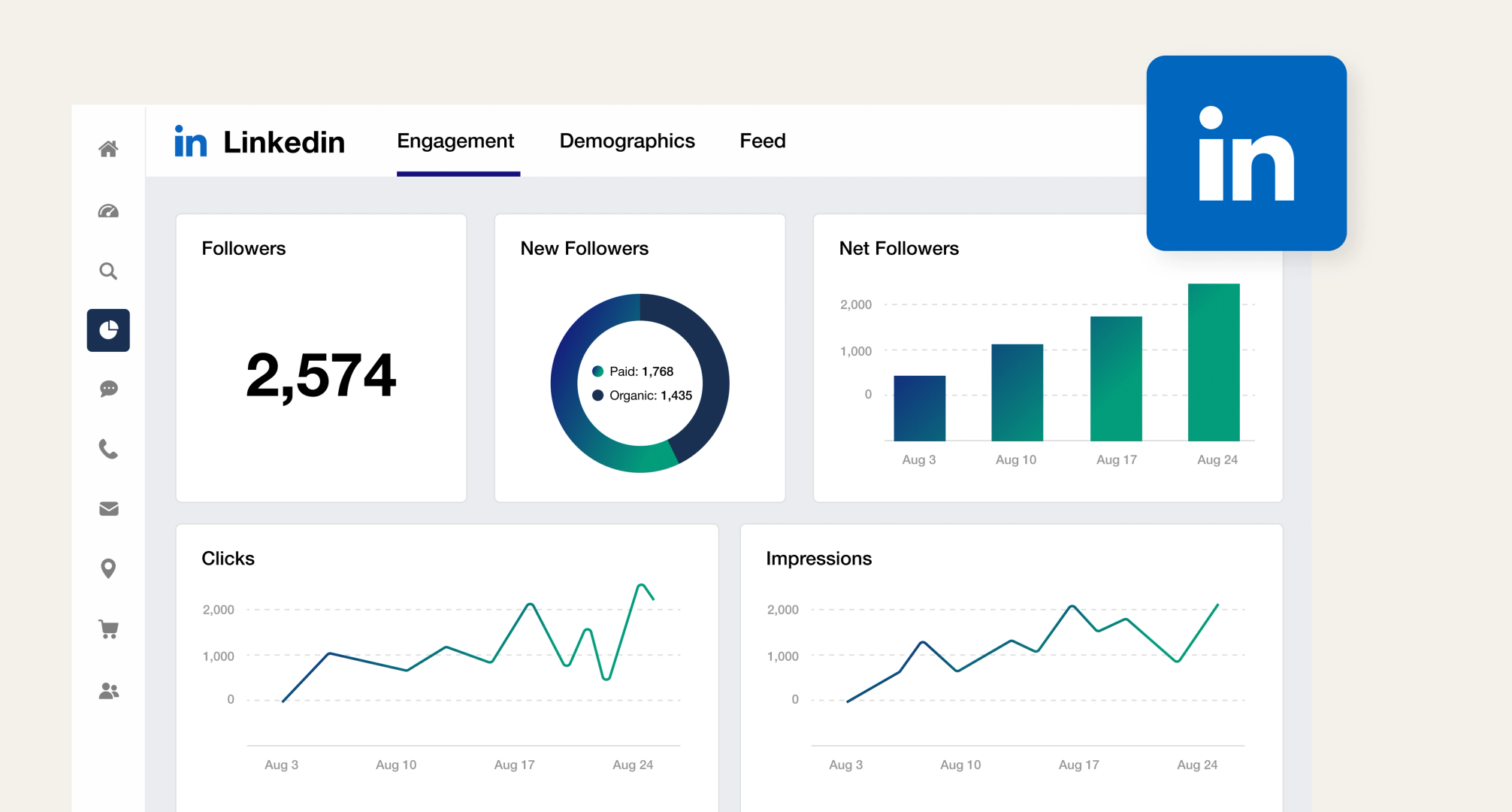
Planning Your LinkedIn Ad Strategy
Planning Your LinkedIn Ad StrategyBefore jumping into tactics, it’s important to zoom out.
A high-performing LinkedIn ad strategy should be an extension of your broader business and marketing strategy, not a siloed initiative. Your paid efforts need to connect to your overall goals, for example, lead generation, brand recognition, thought leadership establishment, recruitment. etc.
From there, your LinkedIn strategy should be broken down into two complementary tracks:
- Organic: Company page content, employee advocacy, executive visibility
- Paid: LinkedIn Ads campaigns aligned to specific business objectives
When these two tracks work together, your brand builds trust and visibility over time, while your ads drive measurable results. But without that strategic foundation, even the most well-executed campaign can feel disconnected or short-lived.
Once this alignment is clear, you’re ready to move into the tactical phase.
Foundational elements to get right before launching your LinkedIn Ads campaigns:
- Define your target audience: Precision matters. Use LinkedIn’s targeting filters to focus on the people who are most likely to engage and convert.Key audience parameters to define:
- Job title, function, and seniority
- Company size, industry, and geography
- Skills, interests, or group memberships (for more nuanced targeting)
- Set clear goals: Identify the primary outcomes you want to drive: lead generation, brand awareness, event promotion, or talent acquisition. Your objectives will inform your creative, targeting, and measurement approach.
- Choose the right ad formats: Select ad formats that align with your objectives:
- Brand awareness → Video or Carousel Ads
- Lead generation → Document Ads or Lead Gen Forms
- Direct outreach → Message Ads or Conversation Ads
🎩 Tip: Use LinkedIn's Ad Library to monitor your competitors’ messaging, formats, and creative pacing.
- Establish KPIs: Define key performance indicators (KPIs) like cost per lead (CPL), click-through rate (CTR), and conversion rates to measure success.
🎩 Tip: Set up conversion tracking early and before launching your campaign. You can implement the LinkedIn Insight Tag on your website to track conversions and gather audience data.
- Develop a funnel-based approach: Structure your campaigns to target different stages of the buyer's journey—attract, engage, delight —with tailored messaging & content.
- Attract: Awareness and education
- Engage: Value-building and resource sharing
- Delight: Direct calls to action, or consultations
- Define budget & bidding strategy: To no surprise, your budget can vary depending on a number of factors, including audience size, industry, ad formats used, etc.
🎩 Tip: We suggest setting a starting budget of at least $3,000 to $5,000 per month for the first three months and adjusting thereafter. This baseline allows for meaningful testing and retargeting. Firms aiming for C-suite audiences or using video/document formats may require a higher monthly threshold.
- Engage your LinkedIn representative: Reach out to your LinkedIn account representative. They can assist with campaign setup reviews, strategic recommendations, and provide valuable reports, such as audience insights and competitor benchmarks. You can also ask your LinkedIn Marketing rep for:
- Competitor benchmark reports
- Audience engagement by job title/function
- Content and audience trend reports
- Consider starting with retargeting: If your firm already drives consistent website traffic through channels like SEO, PR, networking, or other ad platforms (e.g. Google or Facebook), starting your LinkedIn strategy with retargeting can be both cost-effective and high-impact. Instead of building cold awareness from scratch, retargeting allows you to reconnect with visitors who already know your brand, and guide them deeper into your funnel.
- What does “just retargeting” mean in practice?
- Create ad audiences using the LinkedIn Insight Tag, which tracks visits to specific pages (e.g. service pages, case studies, pricing).
- Build campaigns that only serve ads to these warm audiences—like people who visited your site in the last 30, 60, or 90 days.
- Tailor messaging to their behavior.
- How much traffic is enough to start? Ideally, you want a custom audience of 300+ users to begin seeing reliable performance and avoid underdelivery
- What does “just retargeting” mean in practice?
🎩Tip: Are you running a Google Ad Campaign? Here’s an insight of how you can retarget web users.
LinkedIn Ads Funnel Best Practices
LinkedIn Ads Funnel Best PracticesA LinkedIn Ads funnel is a structured strategy that segments your audience based on their position in the sales cycle, delivering personalized messages and offers at each stage.
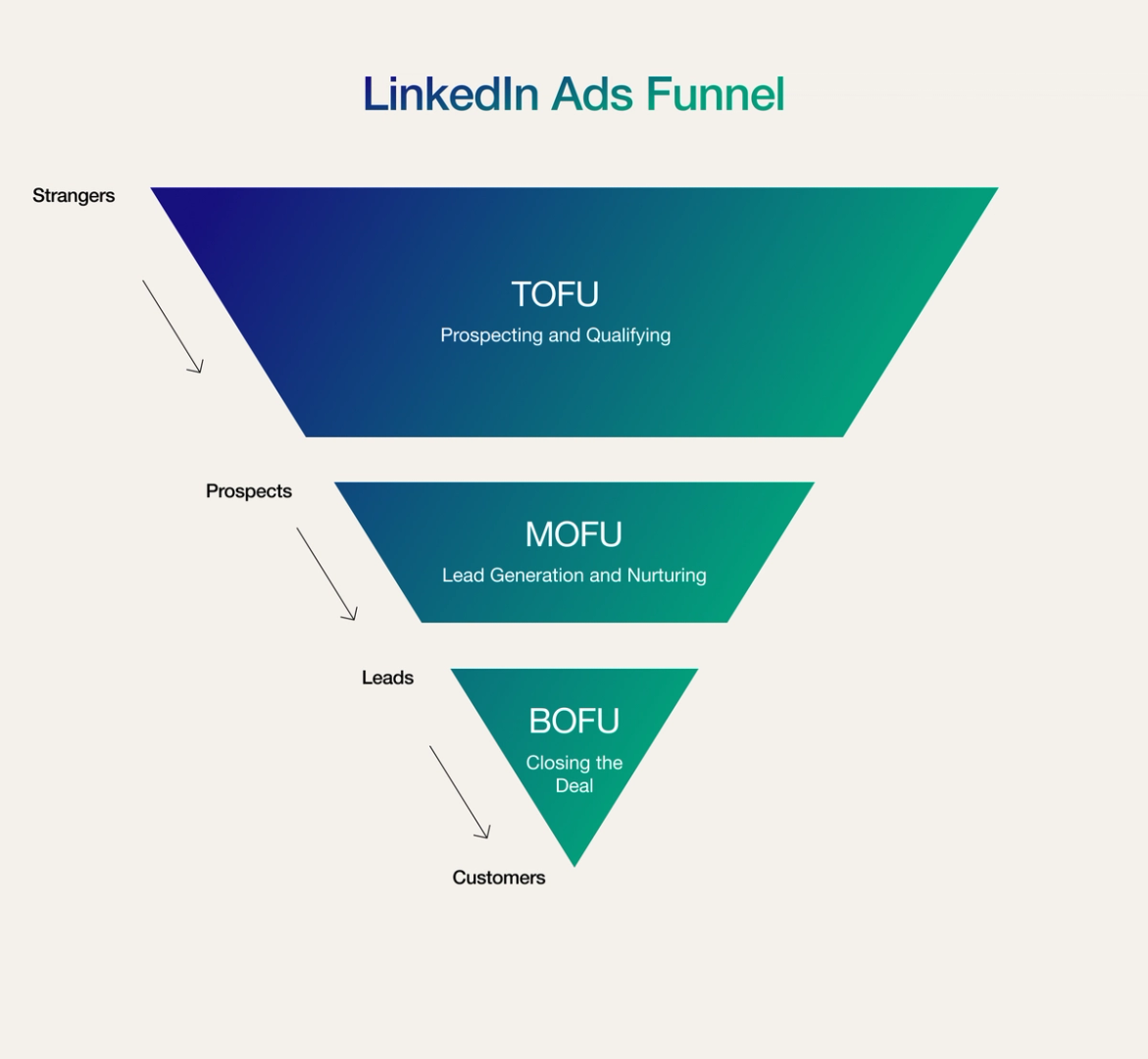
Once you’ve aligned your LinkedIn strategy with your broader business and marketing goals, the next step is designing your paid media funnel. This structure allows you to meet potential clients where they are in their decision-making journey.
Your ad funnel should mirror your sales process:
- Educating early-stage prospects
- Nurturing mid-funnel interest, and
- Activating bottom-funnel conversions.
When done well, this funnel provides the foundation for targeted, high-impact campaigns that build both brand and pipeline.
Building an effective LinkedIn Ads funnel involves more than just selecting ad formats. It requires thinking critically about buyer behavior, messaging maturity, and how each phase contributes to pipeline growth.
Funnel Framework Overview
Before you define tactics, ask yourself:
- What questions are our ideal clients asking at each stage?
- What kind of proof or credibility do we need to build at each step?
- How can paid media accelerate what’s already working via organic, events, or referrals?
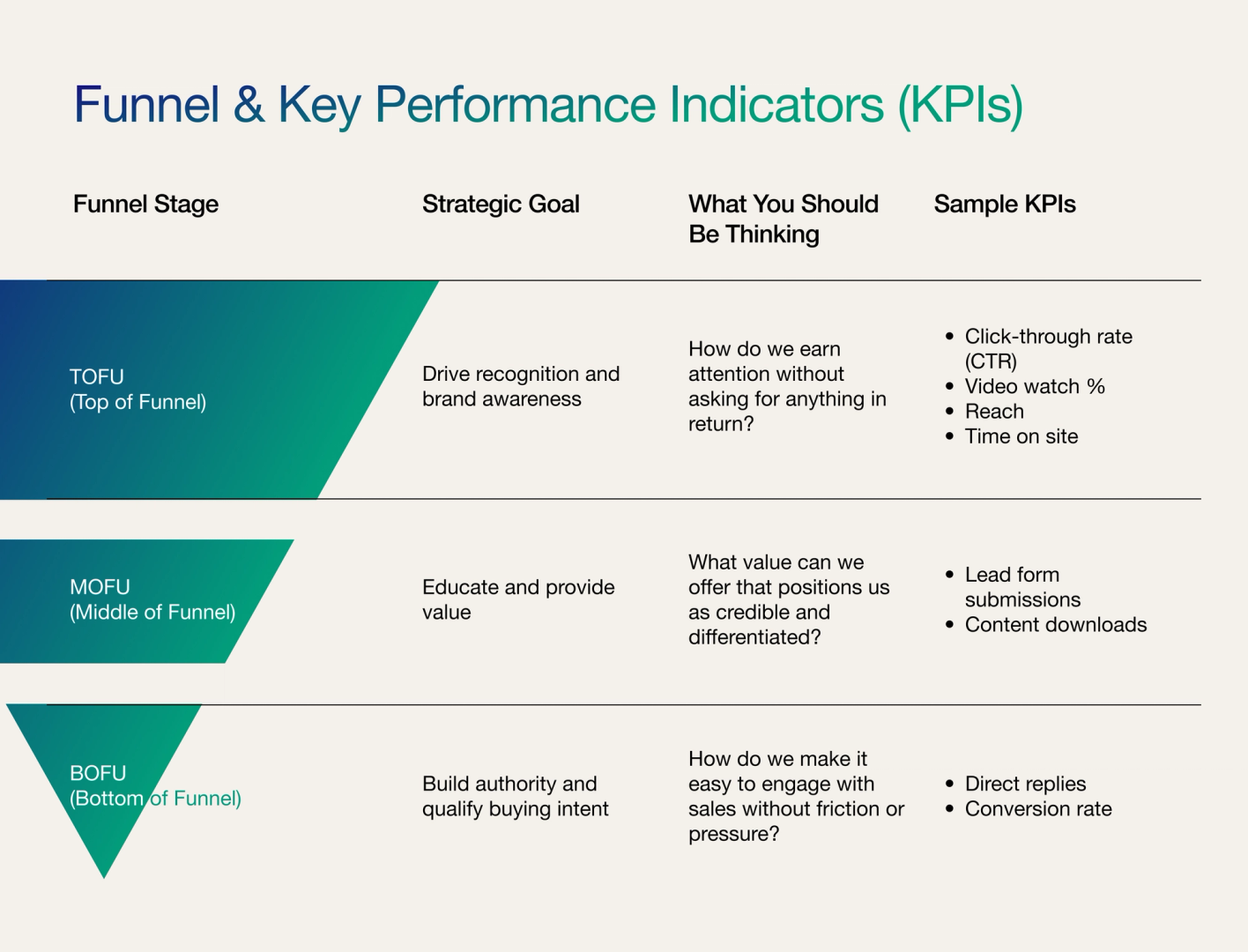
- Define pipeline-centric goals: Tie each campaign to a specific part of your sales cycle—think beyond “clicks” to real business impact.
- Map key performance indicators (KPIs) to funnel stages: Use relevant metrics like click-through rate (CTR), engagement rates, and conversion velocity.
- Align sales & marketing: Ensure lead handoff, messaging, and expectations are in sync across teams.
- Leverage audience intelligence:
- Upload target account lists via Matched Audiences
- Sync CRM segments through HubSpot or Salesforce
- Create retargeting audiences (Insight Tag, Lead Gen Form openers, video viewers)
Phase 1: Awareness Stage (Top of Funnel - TOFU)
What to Consider Strategically: This is about making a strong first impression with the right audience. At this stage, they likely haven’t heard of you—or don’t yet see a need for your services. Your job isn’t to sell, it’s to resonate.
Key Questions:
- What’s happening in their industry that we can speak to?
- What’s our point of view that challenges the status quo?
- How do we establish credibility quickly?
Recommended Formats & Tactics:
- Sponsored Content:
- Share thought leadership articles or industry insights.
- Insightful posts or short-form frameworks tied to timely issues
- Video Ads:
- Human-centered storytelling (e.g. firm leadership or expert POV).
- Top-of-funnel attention-grabbers.
- Use subtitles and test "talking head + text overlay" styles.
- Carousel Ads: Showcase a series of client success stories or service offerings.
- Best for storytelling or breaking down frameworks. Use 3–5 slides max. The first slide must hook.
Messaging Focus: Challenge assumptions, share insights, highlight industry trends
Not: “Here’s our service.”
Instead: “Here’s what firms like yours aren’t doing—but should.”
Phase 2: Consideration Stage (Middle of Funnel - MOFU)
What to Consider Strategically: At this point, the audience is aware of your firm, but they’re evaluating their options. This is where you move from “interesting” to “credible.” The focus should be on providing value, not gated offers for the sake of lead volume.
Key Questions:
- What pain points or needs are your ideal client personas actively trying to solve?
- What objections or hesitations might they have?
- What resources or insights would help them move forward?
Recommended Formats & Tactics:
- Webinar Promotions: Invite prospects to industry-specific webinars.
- Document Ads: Share detailed service brochures or reports.
- Document Ads perform best for lead generation.
- Click-through rate (CTR) is often 2x single image ads.
- Lead Gen Forms: Offer downloadable whitepapers or case studies.
Messaging Focus: Educate and reassure. Show them what you do, how you think, and what outcomes they can expect.
Think: “We’ve helped firms like yours navigate this before—here’s how.”
Further Reading: LinkedIn Content Strategy 2025
Phase 3: Consideration Stage (Middle of Funnel - MOFU)
What to Consider Strategically: This is where warm ideal client personas need a clear, low-friction path to take the next step. Use social proof, urgency, and clarity.
Key Questions:
- What proof do they need before reaching out?
- Are we removing unnecessary friction from the call-to-action?
- Is the sales team ready to follow up quickly and effectively?
Recommended Formats & Tactics:
- Case Study Highlights: Showcase detailed success stories relevant to the prospect's industry.
- Retargeting Ads: Remind visitors of your services after they've engaged with your content. Reinforce what they’ve already seen or interacted with
- Customized to warm leads based on site behavior, video watches, or form opens.
- Sponsored InMail: Direct, tailored outreach offering audits, consults, or strategic reviews.
- Conversation Ads: Best for 1:1-like invites, limited-time offers, and demo nudges.
- Personal tone > corporate.
Messaging Focus: Offer clarity, simplicity, and a confident next step.
→ “Book a consultation.”
→ “See how your firm compares."
→ “Talk to our specialists.”
Example of a LinkedIn ad funnel:
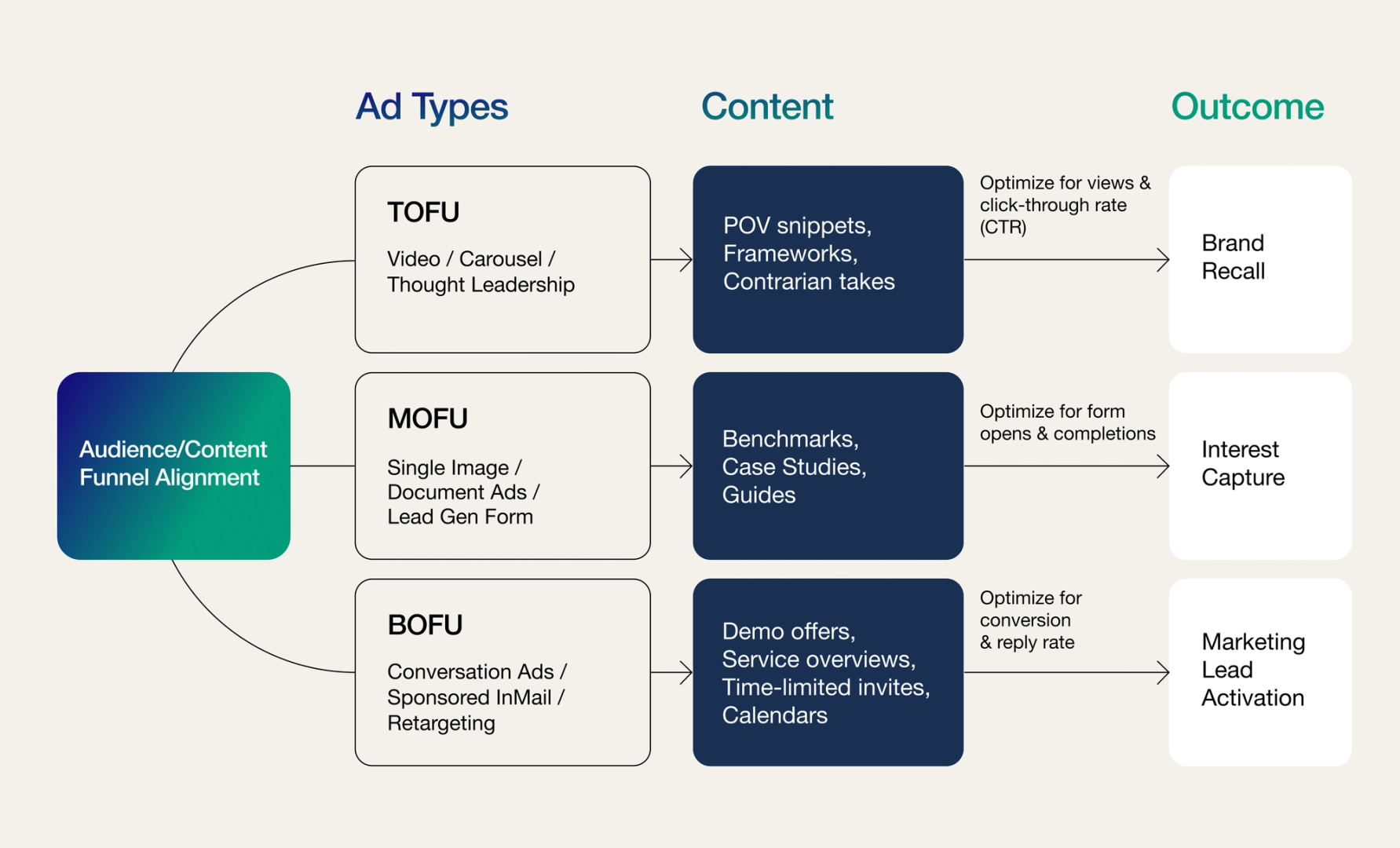
You Have Your Strategy. You’ve Launched. Now What?
You Have Your Strategy. You’ve Launched. Now What?Launching your campaigns is the midpoint. The real results happen through ongoing iteration, testing, and optimization.
Once your ads are live, your goal is to learn what is and isn’t working, and why. Your best-performing creative today could fatigue in weeks. That’s why the strongest campaigns are built on systems of experimentation.
Creative testing & optimization
Creative testing is about gathering critical insight into what resonates with your audience, what drives qualified interest, and how your organization is perceived in-market.
The difference between a campaign that performs decently and one that generates true interest often comes down to how deliberately you test and iterate.

Test ad variations intentionally. Don’t just A/B test images—test messages, value props, and content types. Here are some examples:
- Headlines: Insight-driven vs. outcome-driven (e.g., “How Firms Like Yours Cut Time-to-Hire by 50%” vs. “Your Competitors Just Cut Hiring Time in Half”)Formats:
- Single image vs. carousel
- Static image vs. document ad (📈 Pro tip: Document Ads often deliver 2x click-through rate (CTR) in professional services)
- CTAs:
- Avoid: “Learn More”
- Test: “Compare Your Firm’s Metrics”, “Download the 2025 Playbook”
- Visuals:
- Test button placements, CTA styling, and whether branded vs. non-branded images impact performance
Creative Testing Cadence
To avoid creative fatigue and keep performance trending upward (while getting statistically valid learnings):
- Start each ad set with 3 to 5 creative variations per ad group
- Monitor performance weekly
- Rotate biweekly, or sooner if click-through rate (CTR) drops >30% or frequency rises
- Test each creative across the same audience to control for targeting bias
Focus on both engagement quality (e.g., click-through rate (CTR), video watch rate) and downstream impact (form submissions, lead quality, sales readiness).
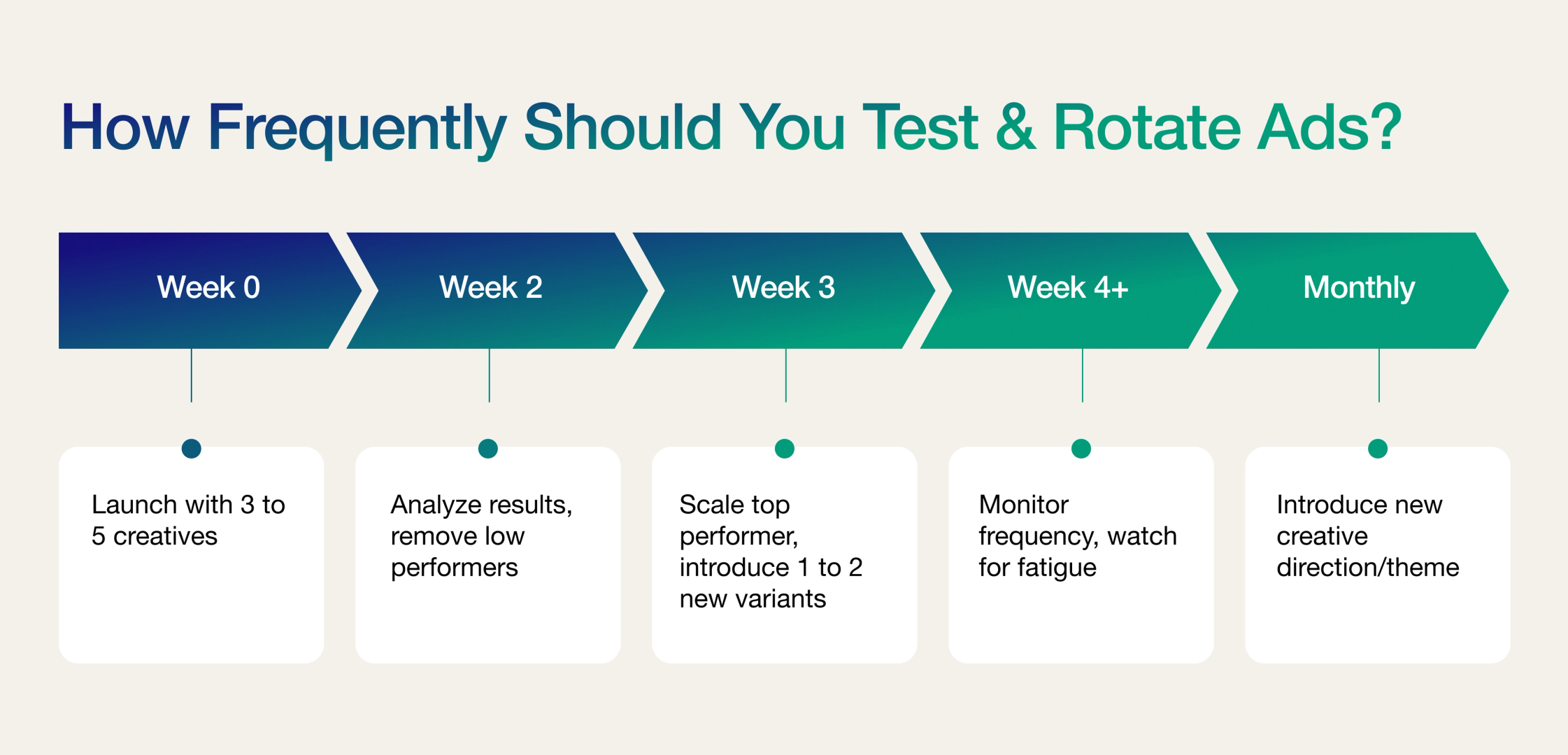
What If Your Ads Aren’t Performing?
- Audit the creative → offer fit
- Are you delivering too much ask (e.g., “Book a call”) too soon? Consider rebalancing toward education.
- Check the audience match
- Are you targeting based on job title and seniority—but ignoring skills, groups, or company size?
- Switch formats
- If document ads are underwhelming, try carousels or a short-form video recap of the same content.
- Shorten the message
- Many LinkedIn audiences skim. Tighten copy to max 3 lines above the fold, with a strong hook.
Measuring Your LinkedIn Ad Impact
Not all clicks are equal, and not all leads are qualified. These are the metrics that matter when assessing the business impact of your LinkedIn Ads:

Tip: Use tools like Whatagraph or HubSpot to blend campaign and CRM data for full-funnel visibility.
Apply these LinkedIn Ad Strategies to Your Campaigns
Apply these LinkedIn Ad Strategies to Your CampaignsA high-performing LinkedIn ad strategy is about relevance, timing, and value at every step of your audience journey. By building out a roadmap, investing in testing, and feeding learnings back into creativity, LinkedIn will reward you with a persistent acquisition engine!
